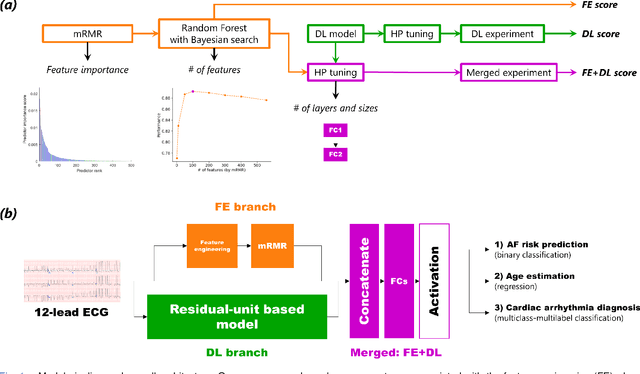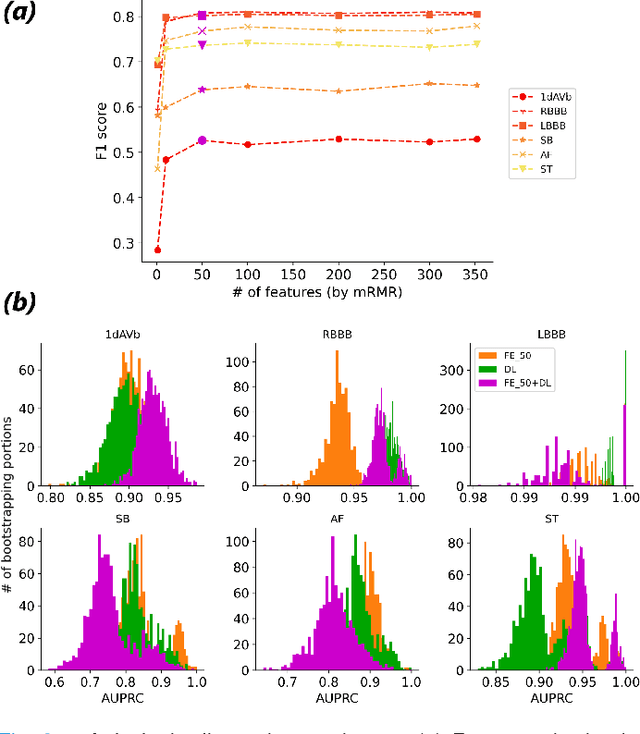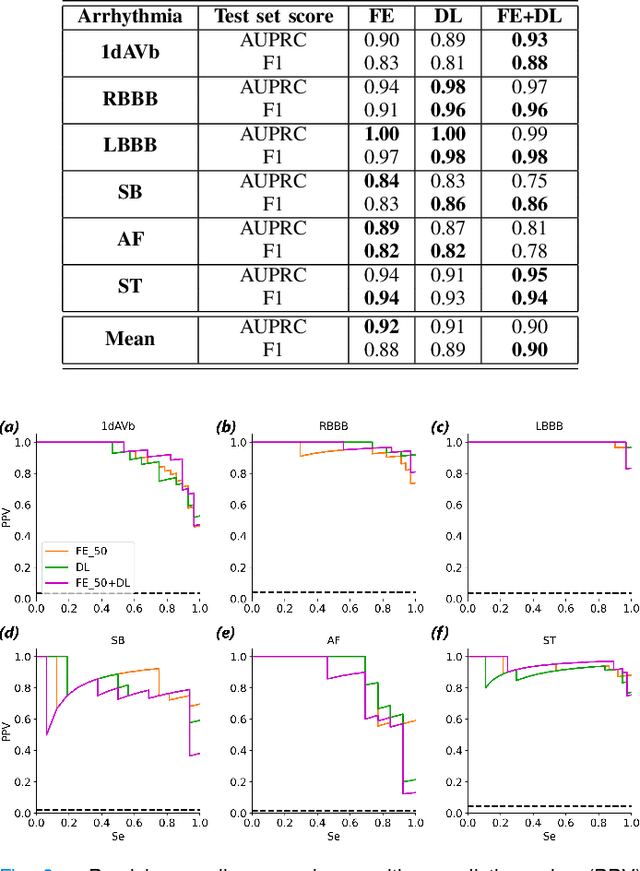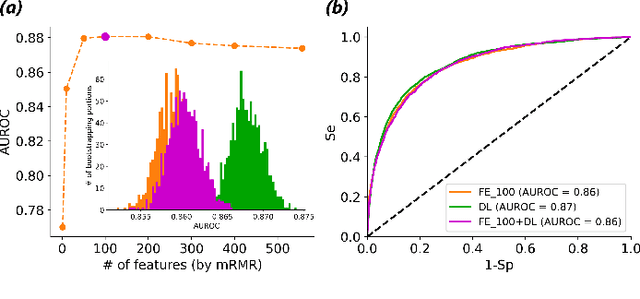Eran Zvuloni
Atrial Fibrillation Recurrence Risk Prediction from 12-lead ECG Recorded Pre- and Post-Ablation Procedure
Aug 22, 2022



Abstract:Introduction: 12-lead electrocardiogram (ECG) is recorded during atrial fibrillation (AF) catheter ablation procedure (CAP). It is not easy to determine if CAP was successful without a long follow-up assessing for AF recurrence (AFR). Therefore, an AFR risk prediction algorithm could enable a better management of CAP patients. In this research, we extracted features from 12-lead ECG recorded before and after CAP and train an AFR risk prediction machine learning model. Methods: Pre- and post-CAP segments were extracted from 112 patients. The analysis included a signal quality criterion, heart rate variability and morphological biomarkers engineered from the 12-lead ECG (804 features overall). 43 out of the 112 patients (n) had AFR clinical endpoint available. These were utilized to assess the feasibility of AFR risk prediction, using either pre or post CAP features. A random forest classifier was trained within a nested cross validation framework. Results: 36 features were found statistically significant for distinguishing between the pre and post surgery states (n=112). For the classification, an area under the receiver operating characteristic (AUROC) curve was reported with AUROC_pre=0.64 and AUROC_post=0.74 (n=43). Discussion and conclusions: This preliminary analysis showed the feasibility of AFR risk prediction. Such a model could be used to improve CAP management.
On Merging Feature Engineering and Deep Learning for Diagnosis, Risk-Prediction and Age Estimation Based on the 12-Lead ECG
Jul 16, 2022



Abstract:Objective: Machine learning techniques have been used extensively for 12-lead electrocardiogram (ECG) analysis. For physiological time series, deep learning (DL) superiority to feature engineering (FE) approaches based on domain knowledge is still an open question. Moreover, it remains unclear whether combining DL with FE may improve performance. Methods: We considered three tasks intending to address these research gaps: cardiac arrhythmia diagnosis (multiclass-multilabel classification), atrial fibrillation risk prediction (binary classification), and age estimation (regression). We used an overall dataset of 2.3M 12-lead ECG recordings to train the following models for each task: i) a random forest taking the FE as input was trained as a classical machine learning approach; ii) an end-to-end DL model; and iii) a merged model of FE+DL. Results: FE yielded comparable results to DL while necessitating significantly less data for the two classification tasks and it was outperformed by DL for the regression task. For all tasks, merging FE with DL did not improve performance over DL alone. Conclusion: We found that for traditional 12-lead ECG based diagnosis tasks DL did not yield a meaningful improvement over FE, while it improved significantly the nontraditional regression task. We also found that combining FE with DL did not improve over DL alone which suggests that the FE were redundant with the features learned by DL. Significance: Our findings provides important recommendations on what machine learning strategy and data regime to chose with respect to the task at hand for the development of new machine learning models based on the 12-lead ECG.
 Add to Chrome
Add to Chrome Add to Firefox
Add to Firefox Add to Edge
Add to Edge